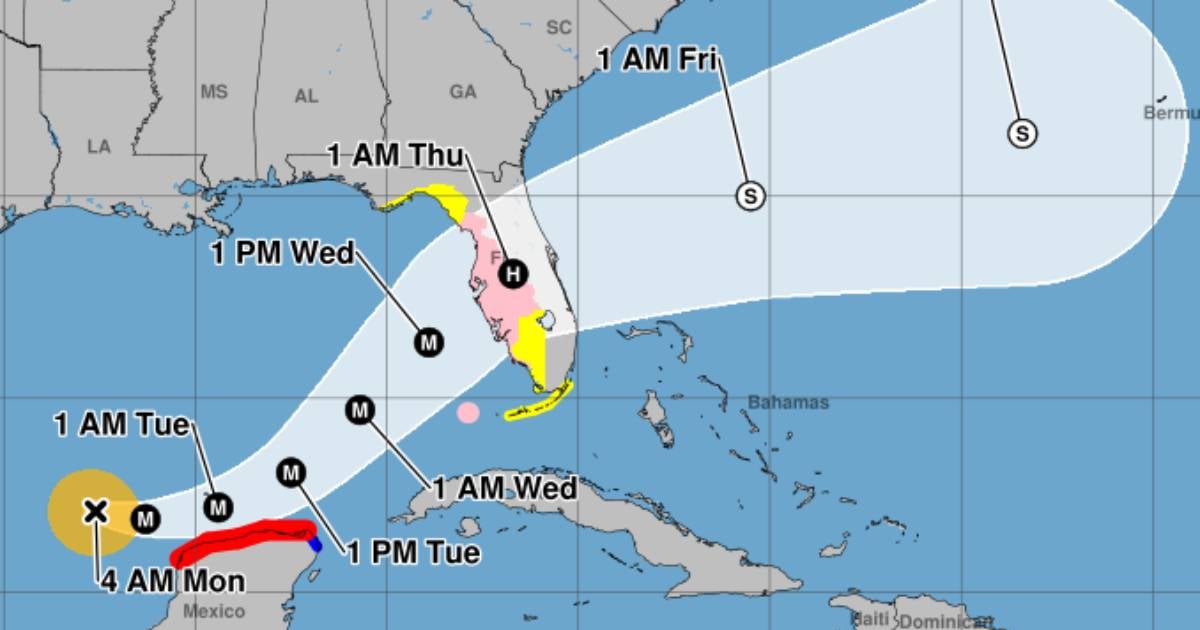The intensifying Hurricane Milton has reached Category 3 status on the Saffir-Simpson scale, posing a potentially lethal threat to Florida's west coast. This powerful storm also threatens the Yucatán Peninsula with heavy rainfall and storm surges. While the latest report does not specify the impact on western Cuba, close proximity makes it advisable to monitor the storm closely.
The National Hurricane Center (NHC) has issued warnings about severe storm surges, torrential rain, and destructive winds in the affected regions. Milton is predicted to gain further strength in the Gulf of Mexico, with projections indicating a landfall in Florida by mid-week.
This dangerous cyclone arrives at a critical time, following the destructive passage of Hurricane Helene across the southeastern United States, which resulted in nearly 200 fatalities. Federal agencies have faced criticism over delayed responses to Helene's aftermath, heightening concerns over preparedness for Milton. Communities hit by Helene are still in recovery, making Milton a sensitive challenge for emergency teams.
Florida Braces for Milton: Evacuations Underway
State authorities have mandated evacuations in vulnerable areas, including Pasco County and Anna Maria Island near Tampa. Other counties are urging residents in coastal buildings to consider voluntary evacuations. Residents are advised not to wait until the last minute and to leave risk areas as soon as evacuation orders are issued.
Hurricane Watch: In effect for Florida's Gulf Coast from Chokoloskee to the Suwannee River's mouth, encompassing Tampa Bay and the Dry Tortugas in the Florida Keys.
Storm Surge Watch: Issued for the Gulf Coast of Florida from Flamingo northward to the Suwannee River, including Charlotte Harbor and Tampa Bay.
Tropical Storm Watch: From Flamingo south to Chokoloskee and from the Suwannee River northward to Indian Pass on Florida's Gulf Coast, as well as the Lower, Middle, and Upper Keys.
Water levels could rise between 8 to 12 feet near Tampa Bay and the Anclote River, Florida. Charlotte Harbor and other coastal areas in Florida might also face surges of 5 to 10 feet, leading to severe flooding in vulnerable zones. Storm surges are expected to inundate typically dry coastal areas, with potentially deadly rip currents affecting much of the Gulf Coast.
Current Conditions and Forecast for Hurricane Milton
Although the exact path of Milton remains uncertain, meteorologists warn of a possible rapid intensification on Monday, which could elevate the hurricane's threat level. The storm is currently located 195 miles (310 km) northwest of Progreso, Mexico, and 750 miles (1,210 km) west-southwest of Tampa, Florida.
Maximum sustained winds are at 120 mph (195 km/h), with a minimum central pressure of 972 mb (28.71 inches). Milton is moving east-southeast at 8 mph (13 km/h). Western areas of Florida are already experiencing indirect effects, with heavy rains since Sunday. These conditions are expected to worsen as the hurricane approaches, posing a heightened risk of dangerous storm surges along the west coast.
